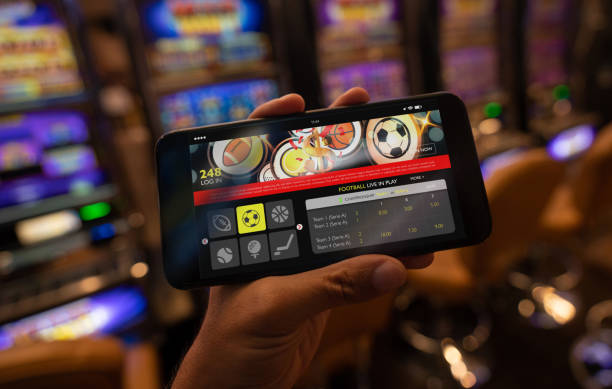
Fast Verification via Passport Scan or Selfie
In today’s fast-paced digital world, the need for secure and efficient verification methods has never been more critical. Fast Verification via Passport Scan or Selfie https://betandres-bd.com Traditional verification processes often require lengthy procedures, which can deter potential users and customers. However, emerging technologies are revolutionizing the landscape, allowing for rapid verification through passport scans or selfies. This method not only streamlines user experience but also enhances security measures, making it a favored choice among businesses and service providers.
The Importance of Fast Verification
Fast verification plays a crucial role in various sectors, including finance, e-commerce, travel, and telecommunications. By reducing the time users spend on identification processes, businesses can improve customer satisfaction and retention. For instance, when signing up for a banking service or an online gambling platform, users often encounter lengthy forms and identity checks. Fast verification via passport scans or selfies can mitigate these frustrations, allowing for smoother onboarding.
How Passport Scanning Works
Passport scanning is a straightforward process where a user takes a clear image of their passport using a smartphone or camera. This image is then processed using Optical Character Recognition (OCR) technology, which extracts the necessary information such as the person’s name, date of birth, and passport number. The extracted data is then verified against a database or government-issued records to confirm its accuracy and authenticity.
Furthermore, advanced algorithms analyze the photo for signs of tampering or forgery. By leveraging AI-driven technologies, companies can enhance their verification processes and reduce the risk of identity fraud significantly.
Verification via Selfies: Enhancing Security
In conjunction with passport scanning, verification via selfies has emerged as a powerful tool for identity confirmation. This method involves capturing a live image of the user, which is then compared with the photo on the scanned passport. Liveness detection technologies analyze if the selfie is taken from a real person and not a static image or video, thereby strengthening the verification process.
This dual-layer verification not only provides a higher level of security but also instills confidence in both the service providers and users. With increasing concerns about privacy and data security, implementing robust verification methods has become imperative.

Benefits of Fast Verification
The adoption of fast verification methods that utilize passport scans and selfies comes with numerous benefits:
- Speed: Instant verification enables users to gain access to services without prolonged waiting periods.
- User Experience: Simplifies the sign-up process, leading to higher conversion rates for businesses.
- Enhanced Security: Combines multiple layers of security to prevent identity theft and fraud.
- Cost-Effective: Reduces the need for physical verification processes and saves time and resources.
Challenges in Implementation
While the benefits are apparent, several challenges in implementing fast verification processes must be addressed:
- Privacy Concerns: Users may be cautious about sharing sensitive data. Clear communication regarding data use and storage is crucial.
- Technical Limitations: The accuracy of verification depends on the quality of scans and selfies, as well as the algorithms used.
- Regulatory Compliance: Organizations must ensure compliance with local and international regulations concerning data protection.
Future of Fast Verification Technology
Looking ahead, the future of fast verification technology appears bright. Ongoing advancements in AI, machine learning, and biometric recognition are paving the way for even more secure and efficient systems. Companies will continue to innovate, finding new ways to enhance user experience while ensuring strict security measures are in place.
Blockchain technology has also begun to influence the verification landscape, offering a decentralized approach to identity verification that can further safeguard users’ information. As businesses recognize the value of fast verification, its integration will likely become standard practice across various sectors.
Conclusion
Fast verification via passport scan or selfie represents a significant step forward in the realm of digital identification. By streamlining the verification process, businesses not only enhance user experiences but also fortify their security measures. Embracing these technologies will undoubtedly shape the future of secure online interactions, catering to an increasingly digital and fast-paced world. As such, companies that leverage these innovations will stand out in their respective industries, providing unparalleled service to their customers while ensuring trust and security are at the forefront of their operations.
Laisser un commentaire